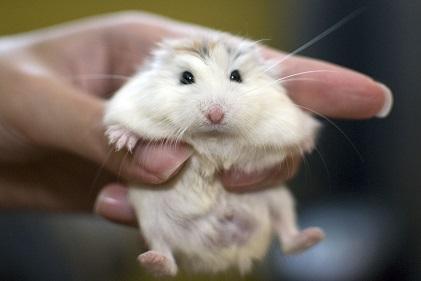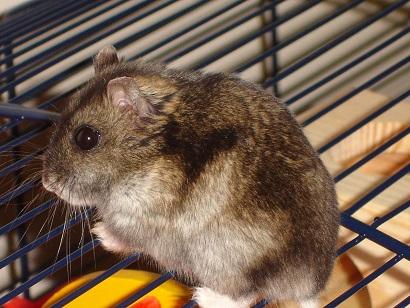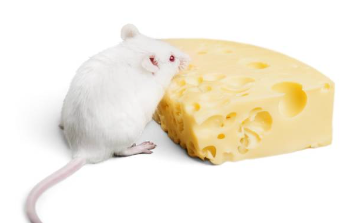Ever find yourself observing a tiny, furry hamster and pondering about its tail or lack thereof? The hamster tail, though often ignored, is an interesting part of these pets.
As a zoologist with years of experience, I’ll take you through everything you need to know about hamster tails in this comprehensive guide.
From their diverse tail lengths and the functions they serve to their importance in overall hamster health and well-being, including issues like “wet tail in hamster”, gear up to embark on a captivating journey into the intriguing world of hamster tail anatomy.
Let’s dive in!
Table of Contents
Hamsters DO Have Tails, But How Long Can They Be?
Do hamsters have tails?” It’s a typical question that many pet owners have. Contrary to popular belief, hamsters indeed have tails! However, the size and visibility of the hamster tail significantly depend on the species. They can be as short as a fingernail or surprisingly long, with a few reaching up to an inch.
But wait to reach for that ruler! Identifying hamster species by tail length involves more than just measurements.
- Syrian hamsters, for instance, boast a tail length of approximately 1 cm.
- Syrian hamsters, on the other hand, have tails almost as long as their body.
Tail Variations in Different Hamster Species
The hamster tail’s length and shape in hamsters display significant diversity across species, providing a unique identity to each. This variety can be categorized as follows:
- Short and Stubby: Species like Syrian hamsters and Roborovski hamsters sport nearly invisible, short tails camouflaged in their fluffy fur.
- Long and Prominent: In contrast, Chinese hamsters exhibit long tails, almost equaling their body length, setting them apart from their short-tailed counterparts.
- Intermediate: Some species fall somewhere in between, exhibiting tails that aren’t too short or too long.
These variations aren’t mere aesthetics but evolutionary adaptations serving specific functional roles in hamsters’ lives.
Comparison of Tail Lengths and Shapes
Hamster species vary significantly in terms of tail length and shape, grouping them into two broad categories: those with short tails and those with long tails.
Short Tails
The hamsters that sport short, almost invisible tails include:
- Syrian Hamsters: Their tails are petite, nestled in their fluffy fur, almost disappearing into it.

- Roborovski Hamsters: These tiny critters also have small tails that blend seamlessly into their fur.

- Campbell’s Dwarf Hamsters: They possess short, stubby tails that can be hard to spot due to their compact size.

- Winter White Dwarf Hamsters: Similar to Campbell’s, their tails are diminutive and snugly hidden within their coat.

Long Tails
On the flip side, the species with elongated tails include:
- Chinese Hamsters: They boast tails nearly as long as their bodies, providing them with a distinct appearance.
- Black-Bellied Hamsters: Their tails are lengthy and easily visible.
- European Hamsters: They have lengthy tails that stand out, offering a stark contrast to their bodies.
- Armenian Hamsters: Their tails are long and prominent, distinct from their overall body size.
- Ukrainian Hamsters: These hamsters have extended tails, clearly visible and distinguishing them from many other species.
Tail Functions and Adaptations
Beyond aesthetics, the hamster tail plays play crucial role in their lives. These range from facilitating movement to aiding in communication.
Balance and Stability During Movement
In many animals, the tail serves as a counterweight to aid balance and stability during movement, especially when climbing or jumping. However, due to their terrestrial lifestyle and short tails, hamsters mainly use their tails for a slight balance correction during fast or abrupt movements.
Temperature Regulation and Thermoregulatory Role
Though not as profound as in larger mammals, the tail in hamsters also has a thermoregulatory role. It helps in heat dissipation during warmer climates, contributing to their overall thermal homeostasis.
Communication and Social Signaling through Tail Movements
Hamsters utilize their tails for communication purposes. Different tail movements and postures often signify their mood or intention, serving as a subtle language in their social interactions.
Defensive Mechanisms and Tail Usage
Lastly, a hamster’s tail can act as a defensive tool. Although they don’t employ their tails for combat like some animals, the scent glands near the tail’s base can release odors when the hamster feels threatened, helping deter potential predators.
Common Tail-Related Health Issues in Hamsters
Just like any other part of the hamster’s body, the tail can be susceptible to various health issues. Let’s take a closer look at some common tail-related ailments.
“Wet Tail” – Understanding the Diarrhea Condition
“Wet tail” is a common condition in hamsters, characterized by severe diarrhea. Sometimes referred to as “wet tail hamster disease,” it’s not about the physical tail of hamsters but a colloquial term referring to the wet, soiled area around a hamster’s hindquarters.
Tail Injuries and Causes
Hamsters can suffer from tail injuries, often resulting from mishandling or falls. Any abrupt, jerky movement can cause sprains or even fractures.
Tail Infections and Abscesses
Infections and abscesses in the tail can occur due to cuts, bites, or scratches. Immediate medical attention is needed to prevent severe complications.
Nerve Damage and Loss of Tail Function
The hamster tail can also suffer from nerve damage, leading to a loss of tail function. This can result from injury, aging, or certain illnesses.
Proper Care and Maintenance of Hamster Tails
Taking care of your hamster extends beyond feeding and housing. It also includes ensuring the health and well-being of their tail. This critical aspect of pet care revolves around two main aspects – careful handling and regular monitoring.
Handling and Grooming Techniques to Protect the Tail
Gentle and proper handling is crucial to protecting your hamster’s tail from harm. Avoid picking up your hamster by its tail, as it could lead to serious injury. Instead, gently scoop them up from their midsection.
In terms of grooming, hamsters are generally clean animals that groom themselves. However, older or sick hamsters may need help. Use a soft brush to clean the tail area, especially if the hamster can’t reach it themselves.
Regular Monitoring and Early Detection of Tail Issues
Beyond handling, regular inspection of your hamster’s tail is vital. Look out for signs of swelling, redness, wounds, or changes in tail movement. Early detection of any potential issue is key to preventing it from escalating into a more serious condition.
If you notice anything unusual, contact your vet immediately. Remember, a healthy tail contributes to a happy hamster!
Tail-Loss Phenomenon in Hamsters
While it might sound strange, tail loss occurs in the animal kingdom, particularly in reptiles. However, the situation is a bit different in the world of hamsters.
Natural Tail Shedding and Regeneration
Unlike some reptiles, Hamsters do not naturally shed and regenerate their tails. Their tails are a permanent fixture and play vital roles in their daily life, from balance to communication.
Once lost, A hamster’s tail cannot grow back, which underlines the importance of tail protection and proper care.
Causes and Consequences of Tail Loss in Hamsters
Tail loss in hamsters, though rare, can occur due to accidents, fights with other hamsters, or mishandling by humans. It can lead to distress, difficulty in balancing, and potential infection at the injury site.
Not to mention, the absence of the tail compromises their ability to communicate effectively through tail signals.
Conclusion
To conclude, hamster tails may not be the most noticeable feature of these furry companions, but they play a vital role in their lives.
From maintaining balance and communicating to regulating body temperature and warding off predators, the importance of these seemingly inconspicuous tails cannot be overstated.
Remember, taking care of your hamster also means taking care of its tail. With knowledge and kindness, your hamster’s tail can remain as fascinating and functional as nature intended.
FAQs
Do all hamster species have the same length of tail?
No, the length of the tail varies across different hamster species. For instance, Syrian and Roborovski hamsters have very short tails, whereas Chinese hamsters possess significantly longer tails.
Can a hamster’s tail grow back if lost or damaged?
Unlike some animals, hamsters cannot regenerate their tails. If a hamster loses its tail, it is a permanent loss.
What are the primary functions of a hamster’s tail?
A hamster’s tail plays various roles, such as providing slight balance during abrupt movements, facilitating social communication through tail movements, and serving as a potential defensive tool via scent release.
Alina Hartley is a small-town girl with a ginormous love of bearded dragons. It all started with Winchester, a baby bearded who was abandoned at the shelter by his former owners because of a birth defect that caused one front leg to be shorter than the other. Alina originally went to the shelter looking for a guinea pig, but one look at Winchester and it was love at first sight. From that day on, Alina has dedicated her life to learning everything she can about bearded dragons. She loves helping new beardie parents start their incredible journey with these magnificent reptiles.
Follow her on:
LINKEDIN
TWITTER.
Read her latest articles HERE
Learn more about her HERE.

